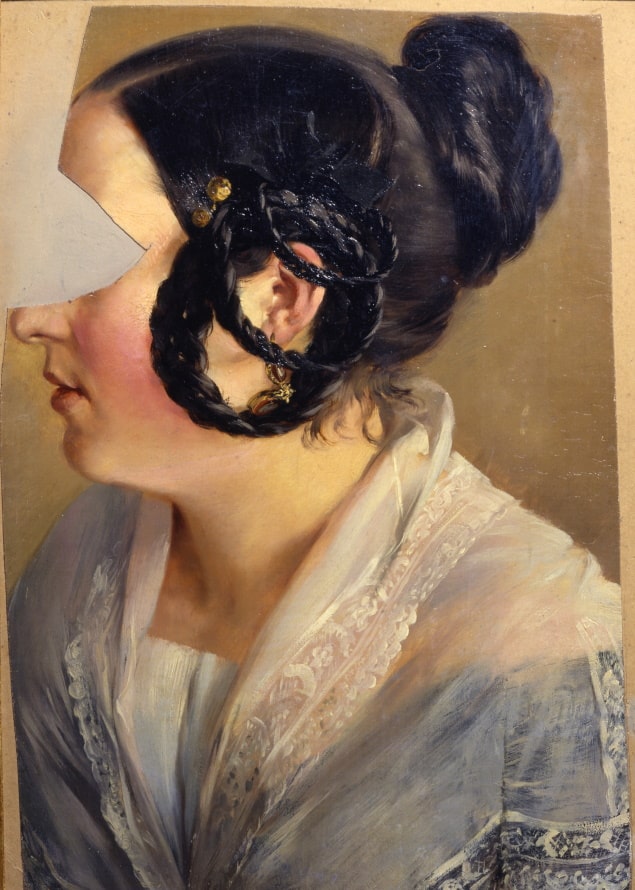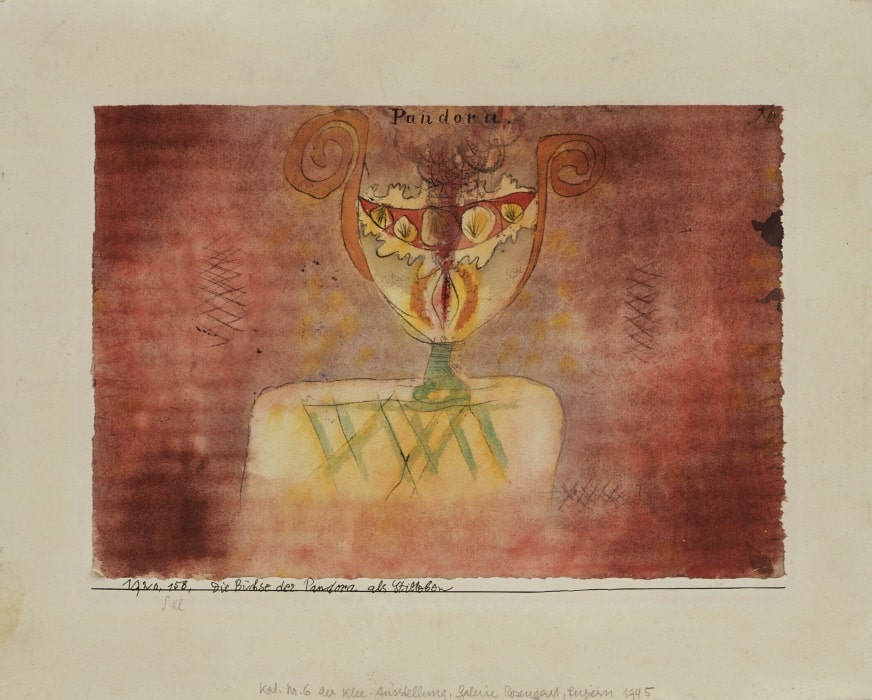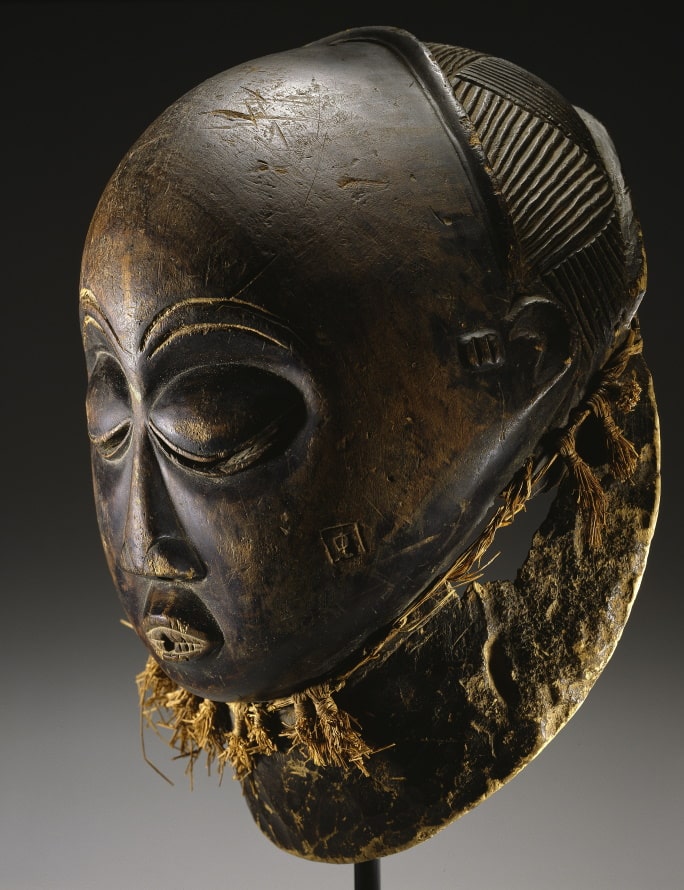Fragments, incomplete or unfinished objects are an integral part of every museum collection. In an exhibition at the Kulturforum, volunteers from the Staatliche Museen zu Berlin (National Museums in Berlin), the Musikinstrumenten-Museum (Museum of Musical Instruments) and the Staatsbibliothek zu Berlin (Berlin State Library) shed light on the multifaceted stories of these objects and the appeal of the incomplete. The exhibition brings together rarely shown exhibits of different genres and cultures from prehistory to the present from 22 collections of the Prussian Cultural Heritage Foundation.
Image above: Theodor Kalide, Bacchante on the Panther, 1844 (marble 1848), © Staatliche Museen zu Berlin, Nationalgalerie / Andres Kilger
Fragments shape our image of the past. Yet not every fragment is immediately recognisable as such. Their incompleteness can be disturbing and at the same time arouse our curiosity. And again and again they trigger the urge to complete. In five chapters and with the help of around 60 exhibits, the special exhibition explores questions raised by the visible and invisible fractures and missing parts of the objects: How did fragmentation come about? To what extent were the objects subject to a change of meaning, perception or function? When is a work “completed” at all?
The exhibition section “Broken Stories” is about fragmentation as an act of destruction. Wars, theft or the division of finds led to the fragmentation of objects. Sometimes, however, the ‘ravages of time’ simply ate away at them. But artists also fragmented their works, for ideological or aesthetic reasons. Adolph Menzel, for example, precisely cut out the eye area from several of his portrait paintings.

© Staatliche Museen zu Berlin, Nationalgalerie / Andres Kilger
The chapter “In the Change of Time” addresses the deliberate dismemberment of objects against the background of reuse in a new context. Often this was accompanied by a blatant change in meaning. High medieval chopped silver and chipped bottoms of late antique glass bowls, which were reused as grave markers in the catacombs of Rome, tell of this. In the fragmentation of objects once created in a religious context, the intended marketing as works of art often played a decisive role.
For a variety of reasons, works have always remained “unfinished and unfinished” in the production process: the traces of workmanship that can be seen, as in the case of a marble relief from the Collection of Classical Antiquities, provide unique insights into historical and artistic creative processes. Such unfinished works were nevertheless sometimes sold. Early print states of the copperplate engraving “The Adoration of the Shepherds” by Hendrick Goltzius raise the question of when a work can be considered “completed” at all.

An insight into the handling of fragments in museum collections is provided in the chapter “Complementing and Restoring”. Whereas in European collections in the 19th century, completeness was usually considered a prerequisite for a sensual experience of the object, since the early 20th century, many historical additions have been removed in order to bring out the fragmentary previous state. The fact that the “Portrait of Virginia da Vezzo” from the Gemäldegalerie is a canvas pastiche was not known for a long time because the background was painted over. Today, the traces of the additions are visible and add to the special charm of the work.
The chapter “The Fascination of Fragments” illuminates the enthusiasm that fragments or incomplete objects have had for centuries, especially for artists. In European art, torsos have been symbols of transience since the Renaissance and are the subject of countless representations. This fascination is still evident today in the reproduction and sale of fragments, for example in the form of plaster casts. Not only the condition of works can be fragmentary. Gaps also show up in provenances and knowledge of contexts. At the same time, the very act of collecting and exhibiting artefacts contributes to their decontextualisation and can be understood as a process of fragmentation. The topic therefore also allows for a critical questioning of the institution of the museum as a place for the preservation of cultural assets.

© Staatliche Museen zu Berlin, Ethnologisches Museum / Erik Hesmerg
“In:complete. Destroyed – Divided – Complemented” is curated by Steffen Backhaus ( Institut für Museumsforschung), Thea Beger (Musikinstrumenten-Museum), Julian Bendel (Ethnologisches Museum), Katja Böhlau (Kunstbibliothek), Lisa Botti (Nationalgalerie), Christina Dembny (Art Library), Lea Hagedorn (Museum of Prints and Drawings), Josephine Hein (National Museums in Berlin), Laura Hinrichsen (Museum of Islamic Art), Lisa Hörstmann (National Museums in Berlin), Laurenz Kern (Berlin State Library), Jenny Körber (National Museums in Berlin), Franziska May (Central Archive), Stefanie Meisgeier (National Gallery), Rebekka Papst (Egyptian Museum and Papyrus Collection), Tobias Renner (National Museums in Berlin), Julius Roch (Numismatic Collection), Giulia Russo (Museum of the Ancient Near East), Theresia Schmitt (Gemäldegalerie), Emma Shu-hui Lin (Museum of Asian Art), Lena Steffens (Ethnological Museum), Matthias Thaden (Museum of European Cultures), Elena Then (Stiftung Preußischer Kulturbesitz) and Valentin Veldhues (Antikensammlung).
The exhibition is supported by the Ernst von Siemens Kunststiftung. A catalogue will be published by Imhof-Verlag. A digital accompanying programme also establishes cross-relationships between the objects in the light of current issues.
WHEN?
Exhibition dates: Friday, 30 September 2022 – Sunday, 15 January 2023
Opening hours: Tue – Fri 10 am – 6 pm, Sat + Sun 11 am – 6 pm
WHERE?
Kulturforum, Kunstbibliothek
Matthäikirchplatz 6
10785 Berlin-Tiergarten






